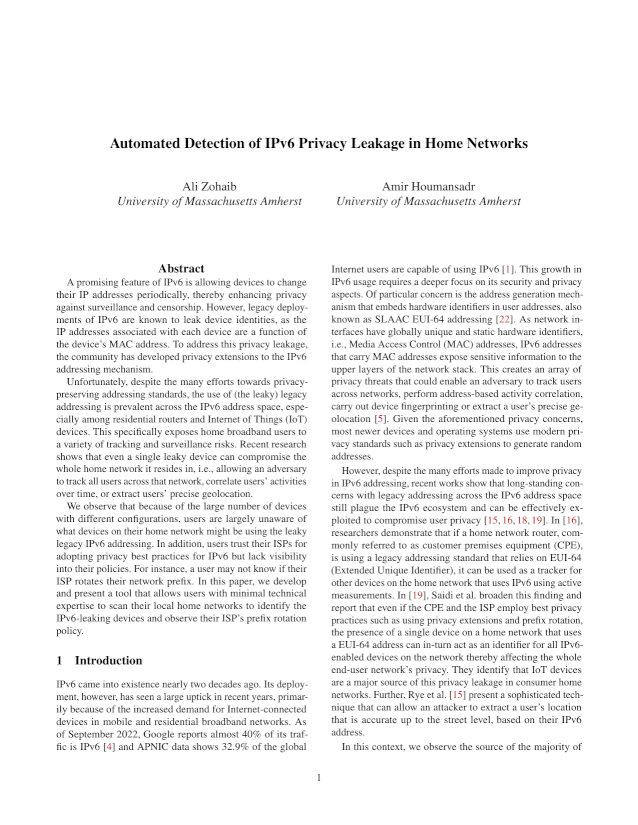Automated Detection of IPv6 Privacy Leakage in Home Networks
Authors: Ali Zohaib (University of Massachusetts Amherst), Amir Houmansadr (University of Massachusetts Amherst)
Year: 2023
Issue: 1
Pages: 30–34
Abstract: A promising feature of IPv6 is allowing devices to change their IP addresses periodically, thereby enhancing privacy against surveillance and censorship. However, legacy deployments of IPv6 are known to leak device identities, as the IP addresses associated with each device are a function of the device’s MAC address. To address this privacy leakage, the community has developed privacy extensions to the IPv6 addressing mechanism. Unfortunately, despite the many efforts towards privacy- preserving addressing standards, the use of (the leaky) legacy addressing is prevalent across the IPv6 address space, especially among residential routers and Internet of Things (IoT) devices. This specifically exposes home broadband users to a variety of tracking and surveillance risks. Recent research shows that even a single leaky device can compromise the whole home network it resides in, i.e., allowing an adversary to track all users across that network, correlate users’ activities over time, or extract users’ precise geolocation. We observe that because of the large number of devices with different configurations, users are largely unaware of what devices on their home network might be using the leaky legacy IPv6 addressing. In addition, users trust their ISPs for adopting privacy best practices for IPv6 but lack visibility into their policies. For instance, a user may not know if their ISP rotates their network prefix. In this paper, we develop and present a tool that allows users with minimal technical expertise to scan their local home networks to identify the IPv6-leaking devices and observe their ISP’s prefix rotation policy.
Copyright in FOCI articles are held by their authors. This article is published under a Creative Commons Attribution 4.0 license.

